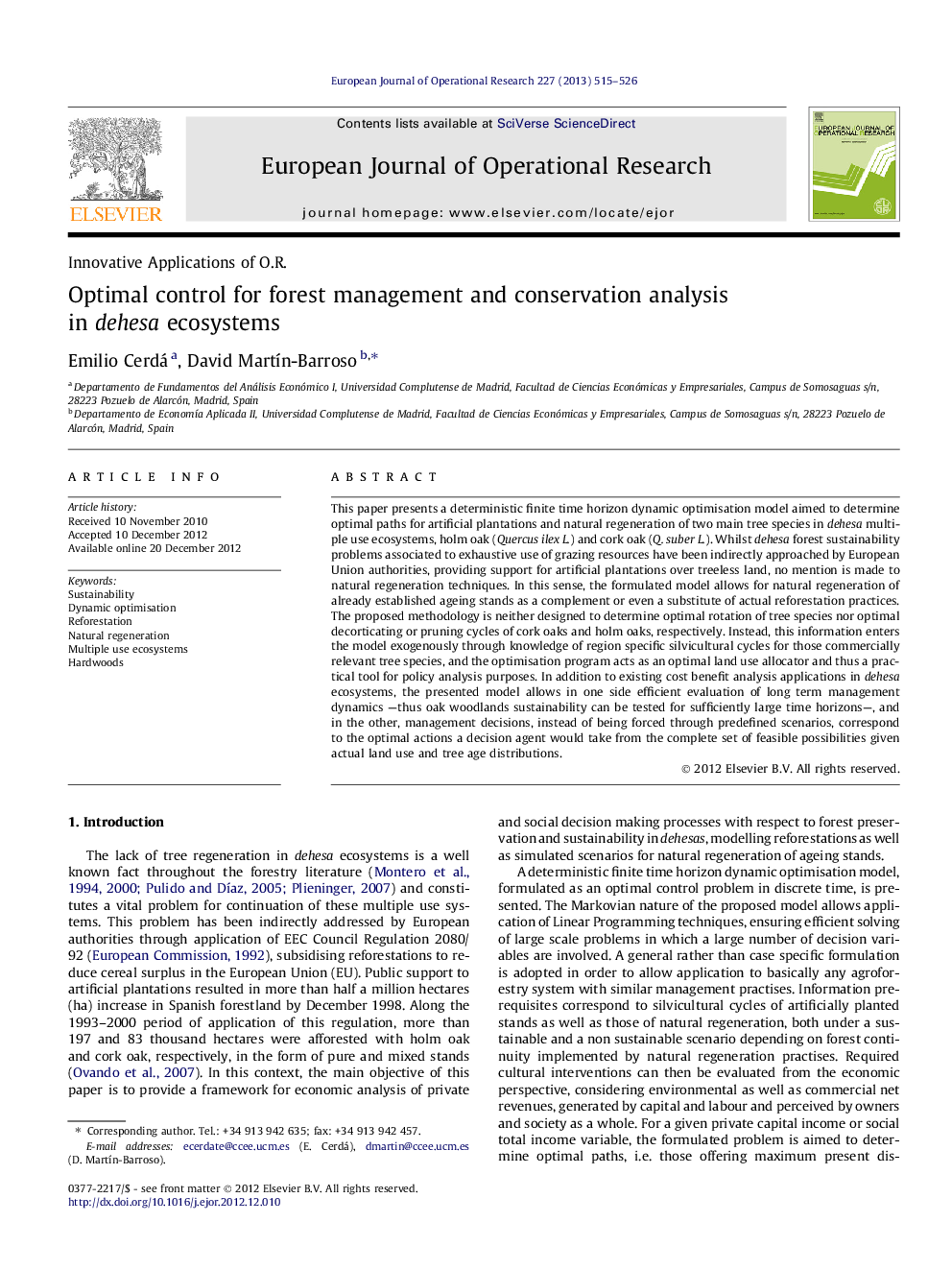| Article ID | Journal | Published Year | Pages | File Type |
|---|---|---|---|---|
| 476753 | European Journal of Operational Research | 2013 | 12 Pages |
This paper presents a deterministic finite time horizon dynamic optimisation model aimed to determine optimal paths for artificial plantations and natural regeneration of two main tree species in dehesa multiple use ecosystems, holm oak (Quercus ilex L.) and cork oak (Q. suber L.). Whilst dehesa forest sustainability problems associated to exhaustive use of grazing resources have been indirectly approached by European Union authorities, providing support for artificial plantations over treeless land, no mention is made to natural regeneration techniques. In this sense, the formulated model allows for natural regeneration of already established ageing stands as a complement or even a substitute of actual reforestation practices. The proposed methodology is neither designed to determine optimal rotation of tree species nor optimal decorticating or pruning cycles of cork oaks and holm oaks, respectively. Instead, this information enters the model exogenously through knowledge of region specific silvicultural cycles for those commercially relevant tree species, and the optimisation program acts as an optimal land use allocator and thus a practical tool for policy analysis purposes. In addition to existing cost benefit analysis applications in dehesa ecosystems, the presented model allows in one side efficient evaluation of long term management dynamics —thus oak woodlands sustainability can be tested for sufficiently large time horizons—, and in the other, management decisions, instead of being forced through predefined scenarios, correspond to the optimal actions a decision agent would take from the complete set of feasible possibilities given actual land use and tree age distributions.
► Optimal control model for policy and forest sustainability analysis in dehesas. ► We model artificial plantations and natural regeneration of oak species. ► Solutions offer optimal paths for reforestations and natural regeneration. ► Model provides the optimal distribution of land uses within a given estate.
